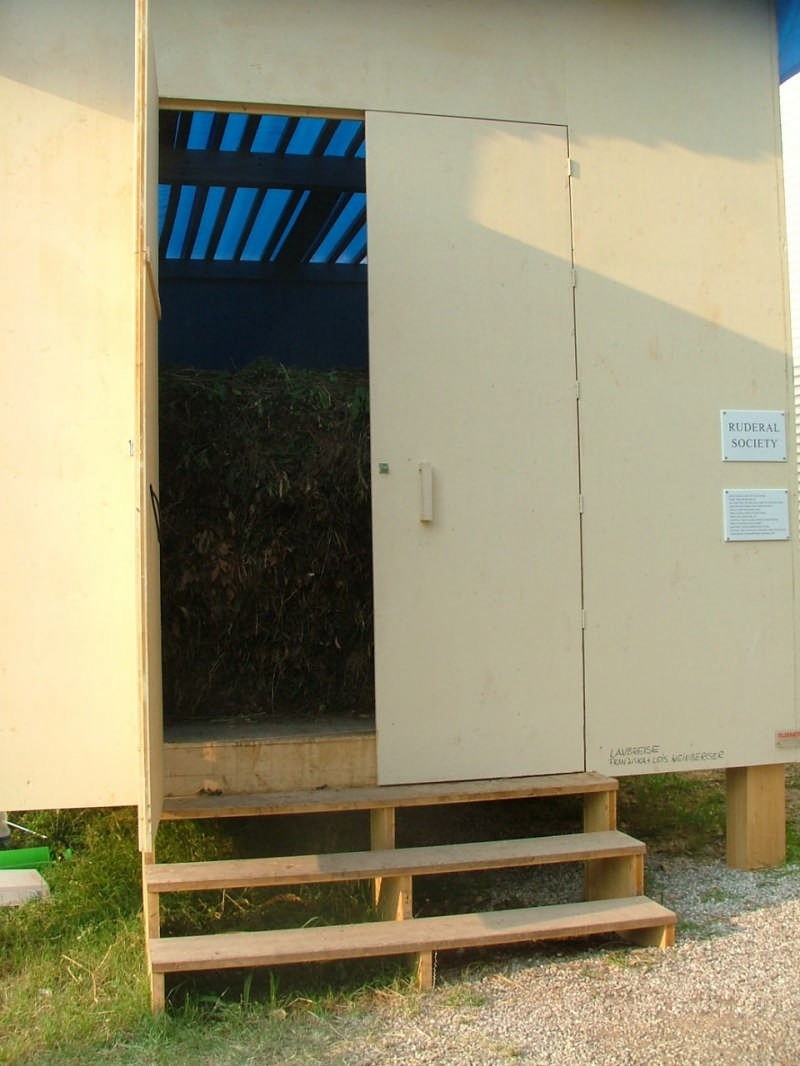A tempietto, sited at an angle of the Austrian pavilion, hewn from coarse timber; a roof of blue plastic tarpaulin, loosely fitted; two steps leading up to an open entranceway; and inside: a huge compost heap, affording little space for visitors, who breathe in the odour of the decomposing plants and have close up view of plants slowly turning back into earth. Creation and decay, nature, culture, art, a multi-sensory preception.
Franziska & Lois Weinberger's undermines the national pavilion. It is extraterritorial, positioned alongside it, and not - as would also have been possible - placed in the inner courtyard. It displays a critical detachment from the architecture of rule and representation of the pavilion itself, both in its skewed placement and in its dimensions and provisional finish. The visitors walks up the two wooden steps to enter the small space, which is taken up almost entirely by the compost heap, and witnesses the process by which off-cuts of plants slowly turn to earth, a natural process which essentially shapes creation and decay on Earth itself.



